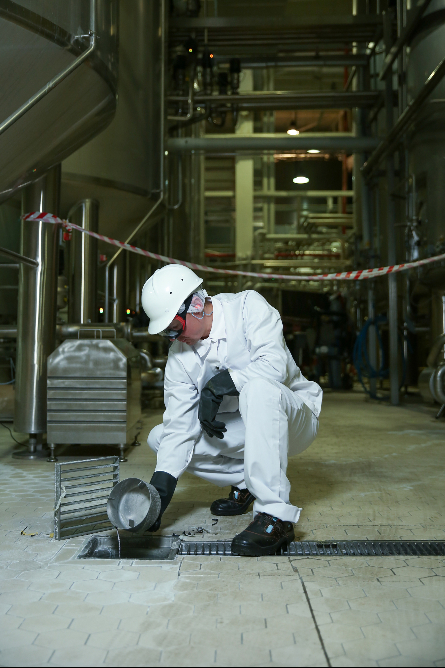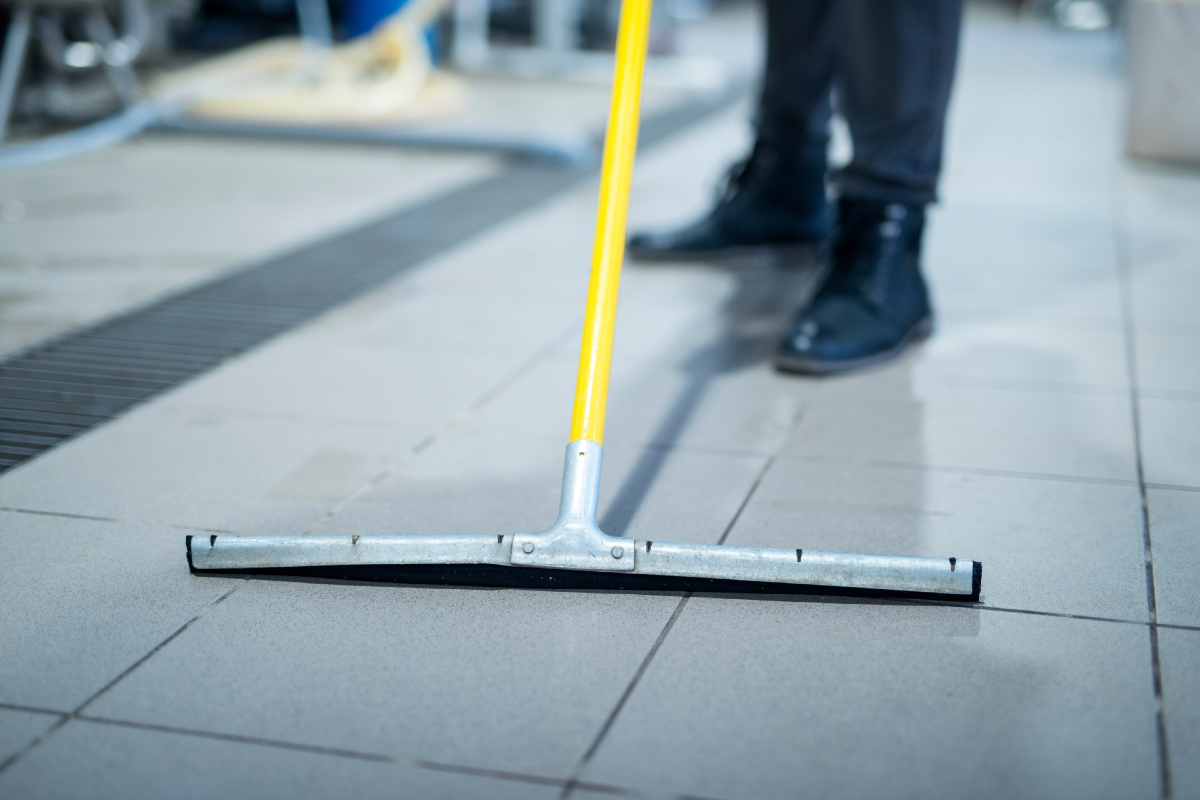Within the heart of a dairy processing operation, down below all the equipment and product and people that make the whole production possible, a component of the enterprise that’s so easy to overlook it quite literally gets stepped upon actually serves a crucial function.
Drainage impacts more aspects of a dairy manufacturing facility than one may think about, what with all the other factors that go into getting a top-notch product out the door.
The experts at Canada-based manufacturer FoodSafe Drains, Winnipeg, Manitoba, call proper drainage more than just a vital mechanism for achieving hygiene and safety standards, explaining that those tactical openings and escape routes in the floor even ensure that a plant keeps running efficiently.
Stringent standards
In terms of food safety and optimal drainage design within a dairy processing facility, Viking Kristjansson, vice president of sales for Global Drain Technologies (which owns and operates FoodSafe Drains and other brands), said the most important practice is the use of sloped floors.
“Slopes allow for water to flow towards drains, preventing standing water and potential bacterial growth,” Kristjansson said of one of the best practices that first came to his mind. “Additionally, using materials that are resistant to chemicals and easily cleanable is crucial for maintaining proper sanitation in the facility.”
Not all aspects of a drainage system are so obvious, though. Kristjansson said designing one for a dairy processing facility comes with unique challenges that aren’t as prevalent in other food and beverage manufacturing spaces.
He pointed out that the acidic nature of dairy products and byproducts – whey is a common example – make it necessary to use materials that can resist corrosion, such as stainless steel, for drainage systems.
“Furthermore, dairy facilities often require more frequent and intensive cleaning processes, involving high volumes of hot water and aggressive cleaning agents,” Kristjansson said. “This necessitates drainage systems designed for heavy-duty use and capable of handling large volumes of water efficiently without compromising the facility’s hygiene or operational efficiency.”
The aforementioned specific requirements, Kristjansson added, distinguish dairy plant drainage designs from those used in facilities that make other products. He said specialized solutions must be utilized to meet the dairy industry’s stringent safety and hygiene standards.
 Photo: Петр Смагин - stock.adobe.com
Photo: Петр Смагин - stock.adobe.comIn fact, Kristjansson advised that dairy facilities often are subject to strict regulations from the United States Department of Agriculture (USDA) and US Food and Drug Administration (FDA).
“Compliance with these regulations not only ensures food safety, but also helps maintain consumer trust in the dairy industry and its products,” he explained. “It requires considering various factors, such as material choice, installation methods and ease of cleaning.”
The California Department of Food and Agriculture’s guidelines for floor drains inside a milk production plant reveal many of the variables that make drainage design so consequential. In one instance, the document calls for the drains to be “properly trapped to exclude odors and connected to a sewer line that will convey refuse milk, water and sewage away to a point at least 100 feet distant from the milk products plant.”
More broadly for the US dairy industry, Kristjansson noted, dairy facility drainage systems are required to have sloped floors, proper materials and undergo regular maintenance and cleaning. USDA’s National Organic Program sets specific standards – including proper drainage and waste management practices – for organic production, he added. What’s more, the Food Safety Modernization Act states that every food and beverage manufacturer must have a written plan for preventing contamination in its facility, and proper drainage maintenance is one of the requirements.
Effective and efficient
It is paramount in operations that involve liquid – or even semi-liquid – dairy products to have the best possible drainage system in place, Kristjansson counseled.
He said products such as milk, yogurt, cheese whey and ice cream, for example, are accompanied by the industry’s hygiene benchmarks to address contaminant prevention, as well as the need for a drain design that is capable of handling significant liquid byproducts that must be removed from an area effectively and efficiently.
“Proper drainage is crucial in areas where these products are processed and packaged, and even during cleaning processes, where large volumes of water are used,” Kristjansson said.
Modern drainage design can be far more intricate than what used to be considered acceptable in dairy facilities of old. One considerable innovation that benefits today’s dairy processors is the smart drainage system. Kristjansson explained that these types of designs utilize a connected network of devices and technology that communicate while monitoring flow and detecting blockages in real time. He pointed out that the technology accelerates maintenance while also lowering contamination risks and downtime in the manufacturing process.
Identifying another emerging trend, Kristjansson said more facilities are using stainless steel when it’s time to construct a drain, because the material is more sustainable than its predecessors.
“These materials offer durability and corrosion resistance, aligning with sustainability goals by prolonging lifespan and reducing replacements,” he said. “Additionally, the development of hygienic drainage systems with self-cleaning features simplifies maintenance, boosting operational efficiency and hygiene standards.”
The dairy processors who work with FoodSafe Drains, Kristjansson shared, frequently seek out the brand’s advanced drainage solutions that focus on hygiene, durability and sustainability.
“The most popular is our line of stainless steel drains and grates, which are not only resistant to the corrosive nature of dairy byproducts, but also offer long-term durability and ease of cleaning,” he said.
FoodSafe Drains’ self-cleaning solutions, he added, are garnering more favor by offering an efficient resource with “minimal manual intervention” necessary.
Conversely, Kristjansson warned, inadequate drainage systems may lead to cross-contamination of dairy products and disastrous scenarios such as foodborne illnesses and product recalls.
“Standing water or poorly designed drains can also create hazardous conditions for workers, leading to potential injuries,” he said. “Additionally, inadequate drainage can result in water damage to facilities and equipment, leading to costly repairs and production downtime.”
 Photo: littlewolf1989 - stock.adobe.com
Photo: littlewolf1989 - stock.adobe.comSlot drains
Among the products offered by FoodSafe Drains, the company considers its Slot Drain systems the best for dairy production facilities. While spot and trench drains may work in other settings, the company said its Slot Drain products don’t require grate covers, making it that much easier to keep an area sanitized, whether that be with a brush and paddle or a clean in place (CIP) system.
The manufacturer’s 10,000 Series Slot Drain is CIP compatible, made with stainless steel and designed without seams and grooves – another way to keep bacteria out of the environment.
The company also highlighted the system’s food-grade stainless steel drain channel, which it said is resistant not only to “extreme temperatures,” but also to bacteria and corrosion.
FoodSafe Drains describes the Slot Drain system as easy to install, pre-sloped and pre-assembled. Plus, the company said the absence of a grate covering makes it easier for facility employees to inspect a drain channel and verify it is free of debris.
Kristjansson noted that another benefit of a Slot Drain system is that a stainless steel design meets the dairy industry’s standards. He said Slot Drain solutions “tend to be more hygienic than trench drains with catch basins because they have fewer hard-to-clean areas. This choice aligns with industry best practices, promoting a safer and more sanitary work environment.”
Further best practices
While offering direction to dairy processing professionals, Kristjansson emphasized that ease of cleaning for a drainage system helps make sure sanitation protocols are impactful. He said rounded corners and stainless steel reduce operational costs, improve safety for a plant’s employees and mitigate safety risks.
Reiterating the benefits of stainless steel, Kristjansson also recommended the material for its durability and resistance to rust.
“Choosing the right materials is crucial for ensuring food safety and maintaining efficiency in dairy facilities,” he said. “Additionally, using materials that are durable and can withstand heavy equipment and frequent cleanings can help prevent wear and tear on the drainage system.”
Once a drainage system is installed and operating at a facility, Kristjansson said prioritizing regular maintenance is a must.
“This can prevent costly downtime in dairy operations and help maintain food safety standards,” he explained. “It is recommended to have a regular cleaning and maintenance schedule in place for all drainage systems.”
To ensure drainage systems remain compliant with food safety standards, he said processors have to stay up to date with NSF/ANSI/3-A and SQF standards, and comply with current norms for food contact surfaces. Furthermore, he said a proper HACCP program considers drainage, cleaning processes and flooring as a collective unit, with each part impacting another area’s performance.
“This integrated approach is crucial for managing risks in dairy facilities,” Kristjansson said.

